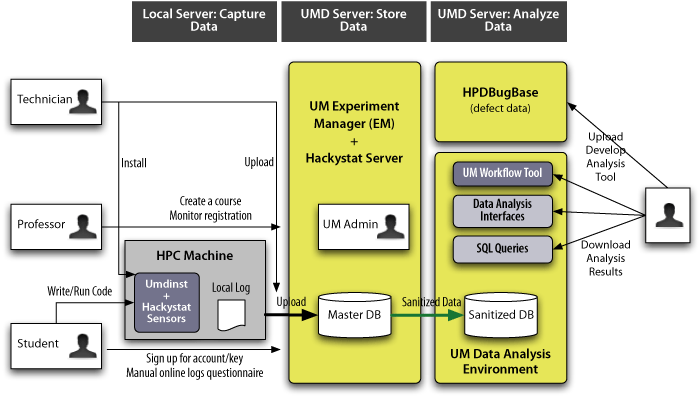As stated earlier, we have collected effort data from student developments and begun to collect data from professional HPC programmers in three ways; manually from the participants, automatically from timestamps at each system command, and automatically via the Hackystat tool, sampling the active task at regular intervals. All three methods provide different values for “effort,” and we developed models to integrate and filter each method to provide an accurate picture of effort.
Our collection methods evolved one at a time. To simplify the process of students (and other HPC professionals) providing needed information, we developed an experiment management package (Experiment Manager) to more easily collect and analyze this data during the development process. It includes effort, defect and workflow data, as well as copies of every source program during development. Tracking effort and defects should provide a good data set for building models of productivity and reliability of HEC codes.

The Experiment Manager (pictured in Figure 5) has three components:
- UMD server: This web server is the entry portal to the Experiment Manager for students, faculty and analysts and contains the repository of collected data.
- Local server: A local server is established on the user machine (e.g., the one used by students at a university) that is used to capture experimental data before transmission to the University of Maryland.
- UMD analysis server: A server stores sanitized data available to the HPCS community for access to our collected data. This server avoids many of the legal hurdles implicit with using human subject data (e.g., keeping student identities private).
For the near future, our efforts will focus on the following tasks:
- Evolve the interface to the Experiment Manager web-based tool to simplify use by the various stakeholders (i.e., roles).
- Continue to develop our tool base, such as the defect data base and workflow models.
- Build our analysis data base including details of the various hypotheses we have studied in the past.
- Evolve our experience bases to generate performance measures for each program submitted in order to have a consistent performance and speedup measure for use in our workflow and time to solution studies.






